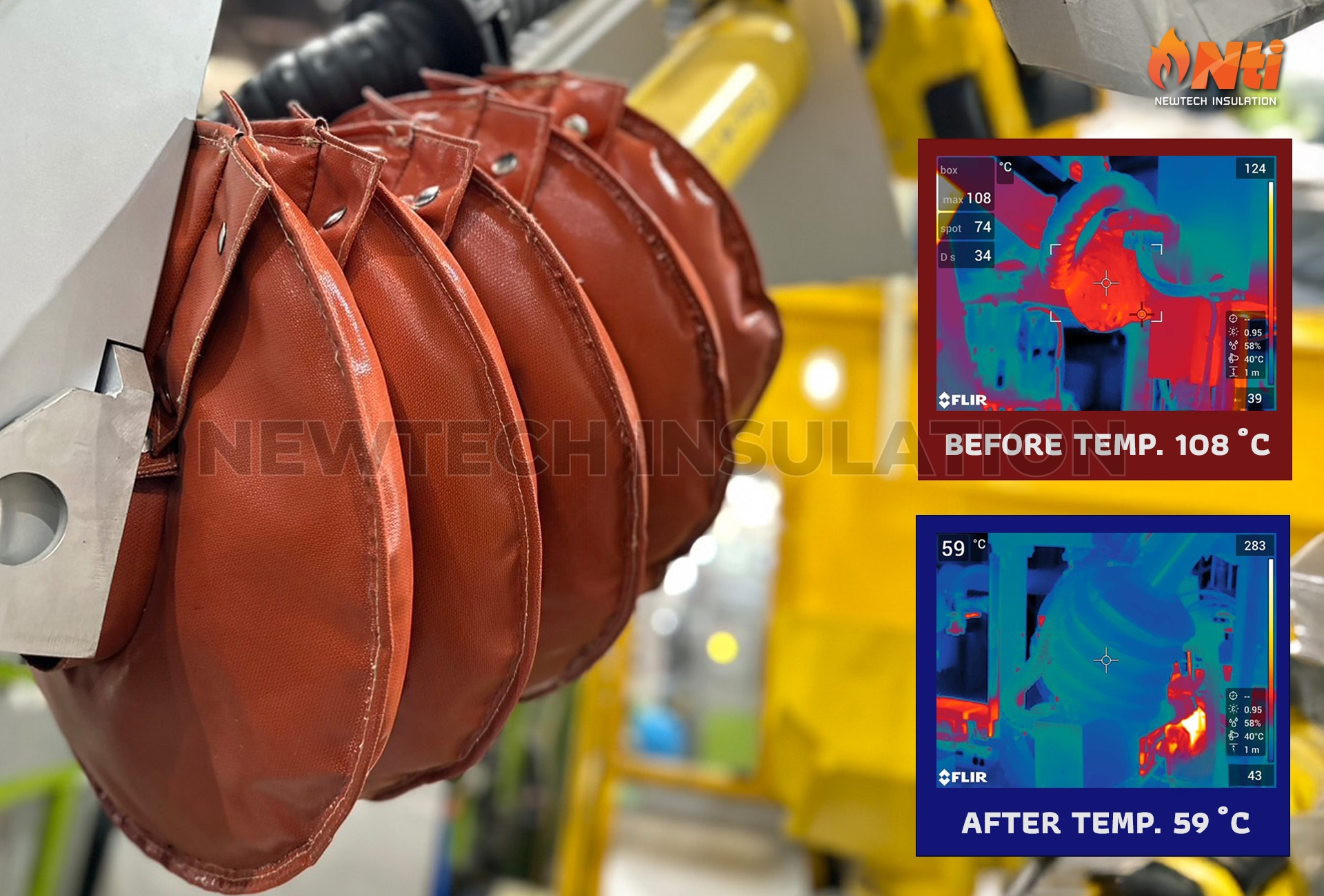
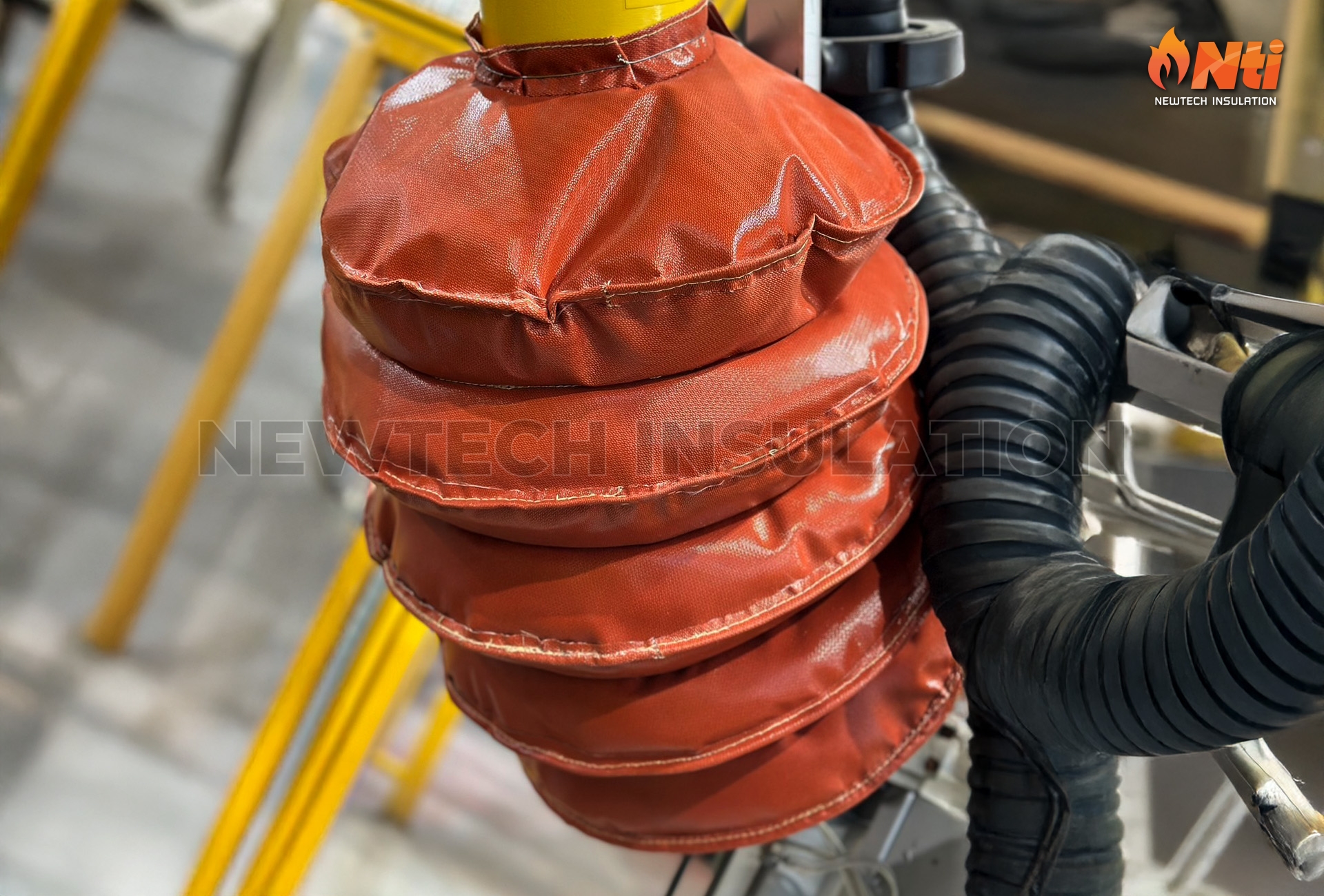
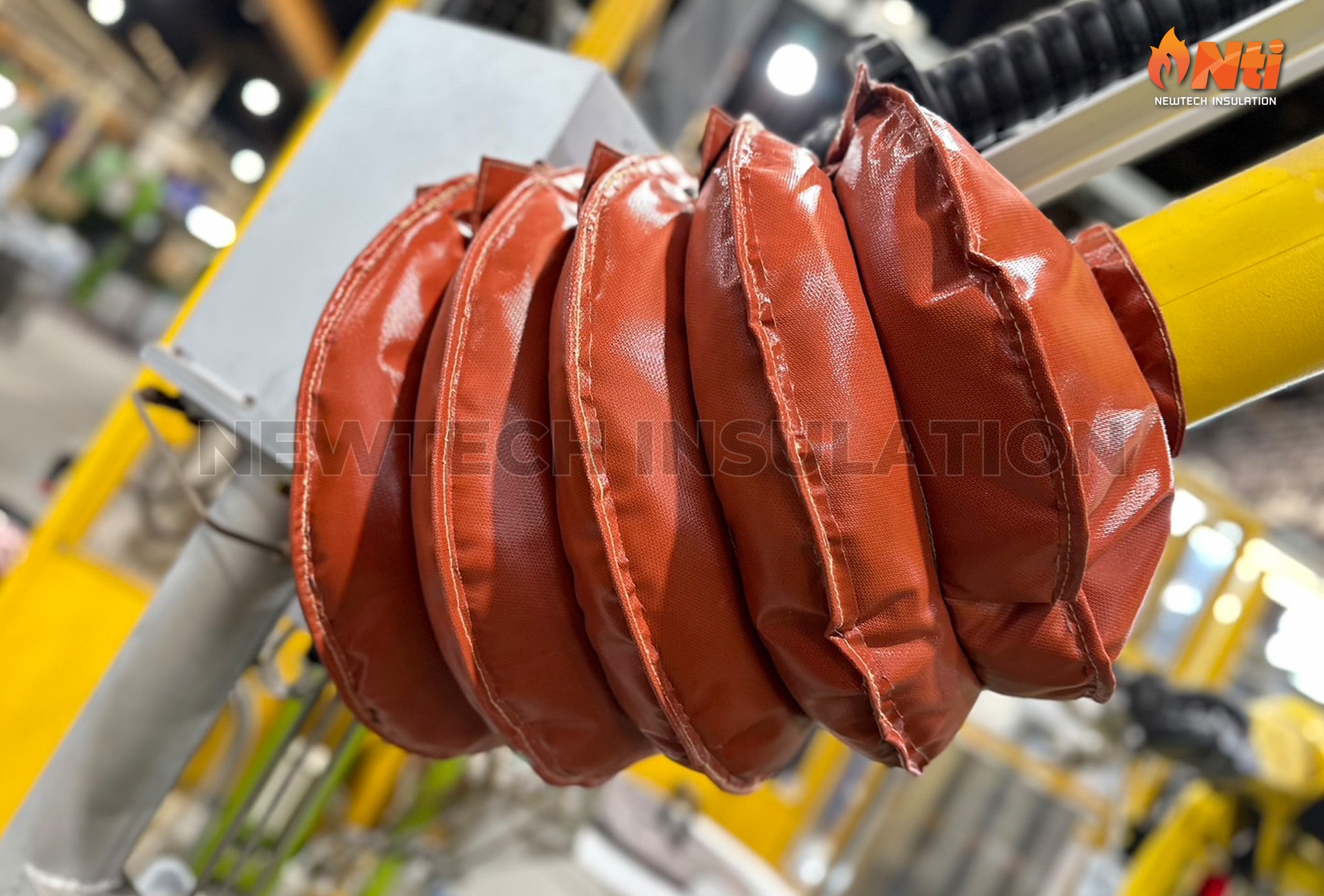
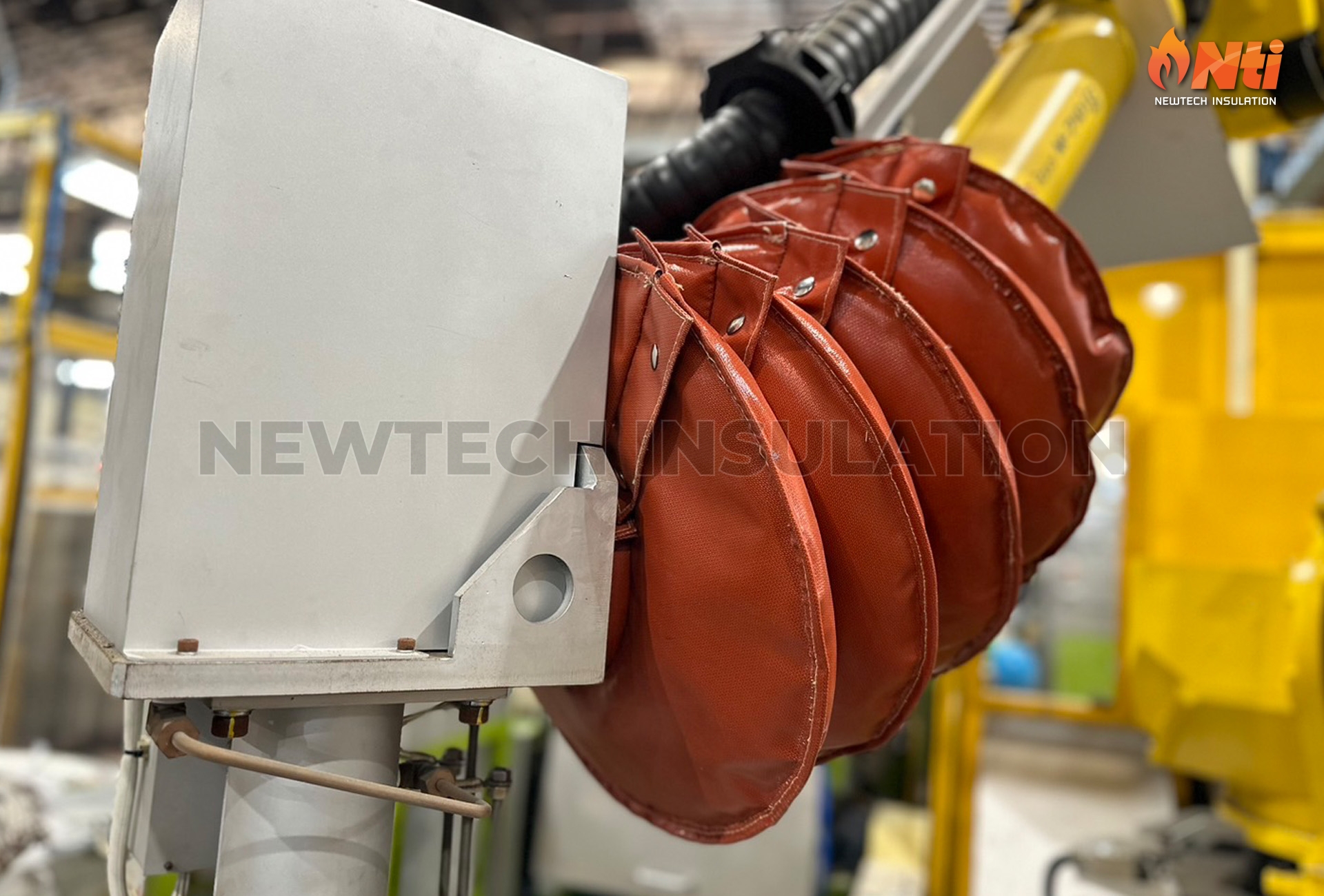
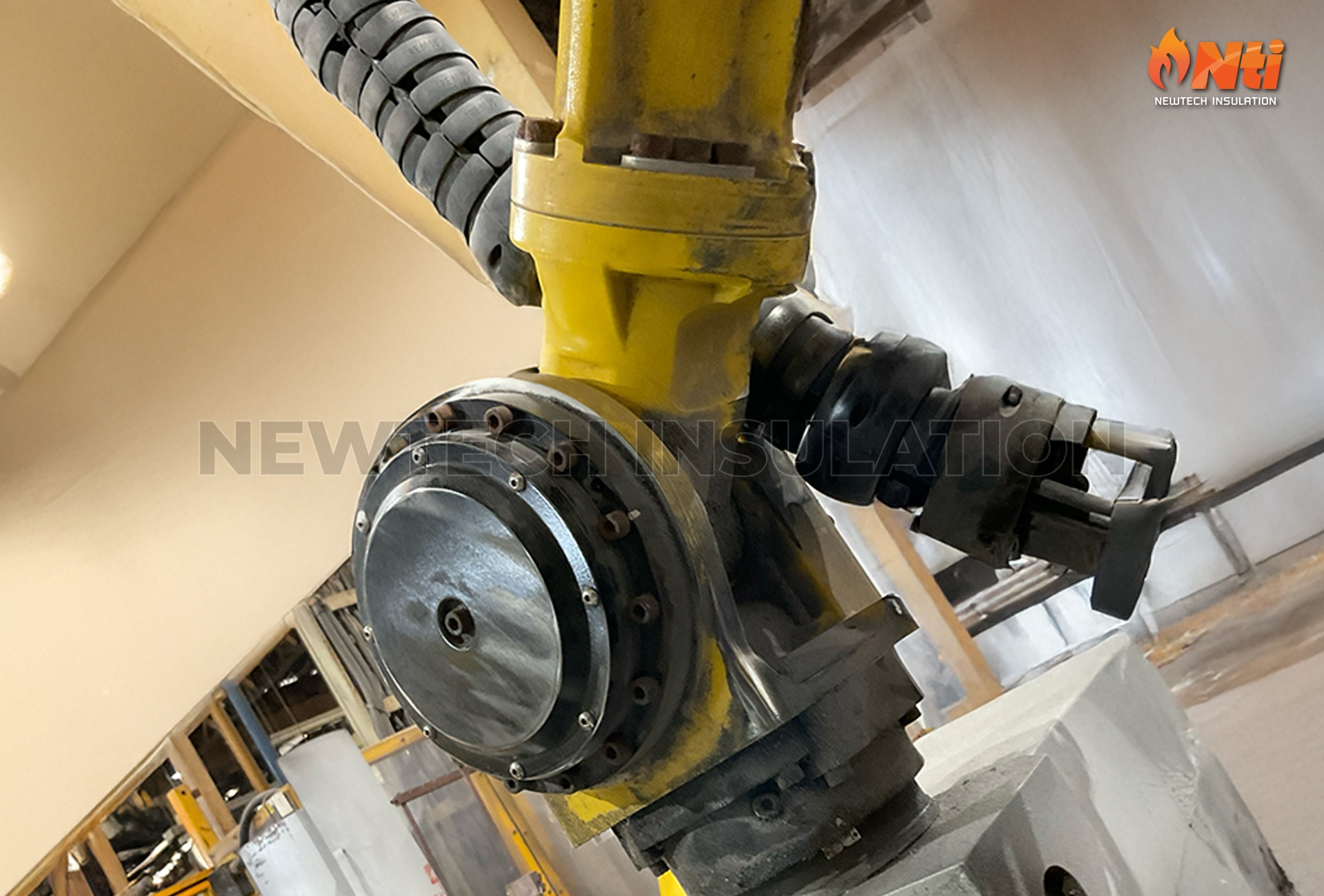





Any unauthorized copying, reproduction, modification, or distribution of any part of this content is strictly prohibited without written permission from Newtech Insulation Company Limited. Any violation will be prosecuted to the fullest extent of the law.
Problems and Causes
Robots in industrial factories play a crucial role in enhancing efficiency, precision, and safety in production processes. However, using robots in high-temperature environments can pose challenges to equipment durability. When robots operate near molten metal furnaces with extremely high heat, the wiring and joints of the robots tend to deteriorate faster than usual due to the heat radiating from the furnaces. This issue leads to unnecessary costs in the production process, such as frequent maintenance and a shortened lifespan of the robots.
Improvement Method
Upon identifying the problem, NTI collected temperature data in the work area using thermal imaging cameras. It was found that heat from the molten metal furnace accumulated at the robot’s joints, reaching temperatures as high as 108 degrees Celsius. Based on this data, NTI proposed a solution by installing removable insulation called ZAVE® on the robot. This insulation is non-flammable, asbestos-free, and has a high density of up to 170 kg/m³. It is designed to be easily removable, facilitating maintenance and inspection of the robot for any damage. Additionally, it offers durability and a significantly longer lifespan compared to standard thermal insulation, with a performance guarantee for heat protection after installation.
Results of the Improvement
| Comparison | Average Temperature (°C) |
| Before Installing Robot Thermal Insulation | 108 |
| After Installing Robot Thermal Insulation | 59 |
| Reduction | 49 |
Note: The working area temperature around the robot is approximately 39-45°C.